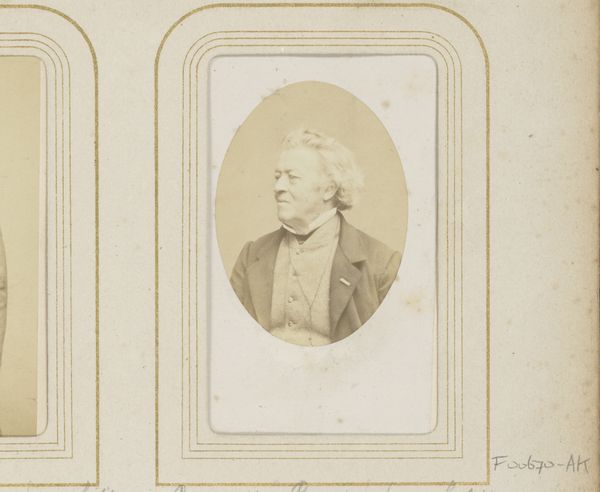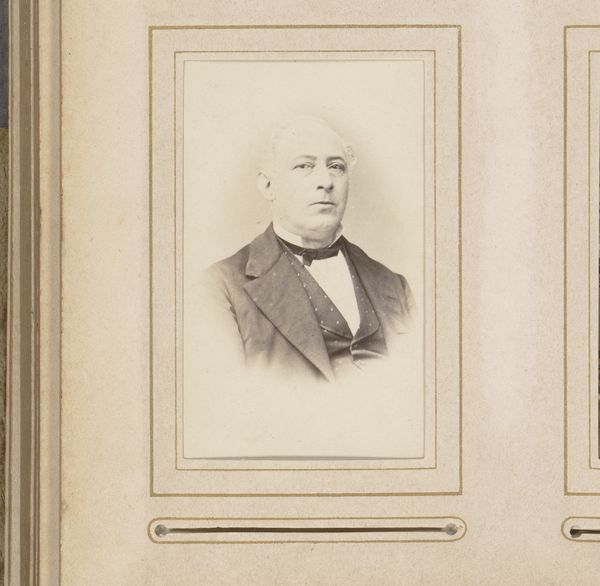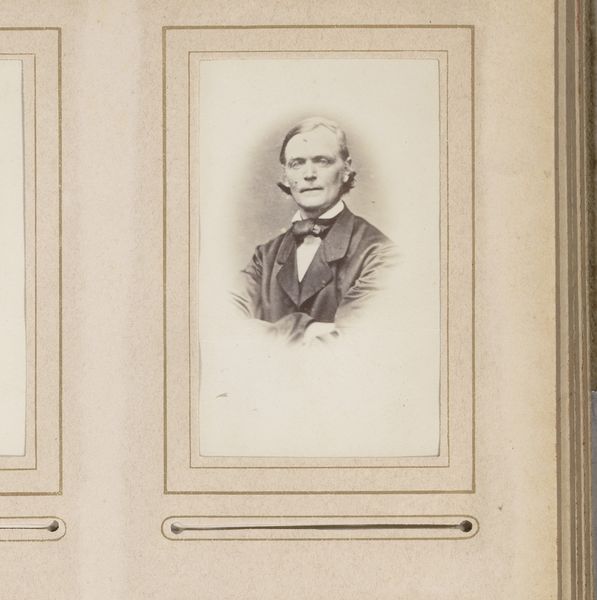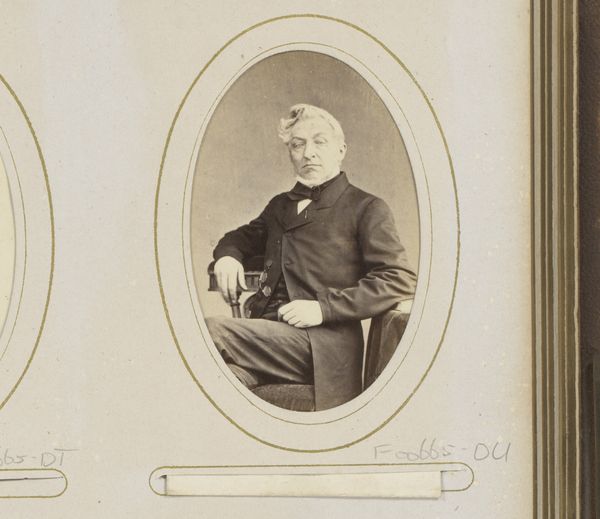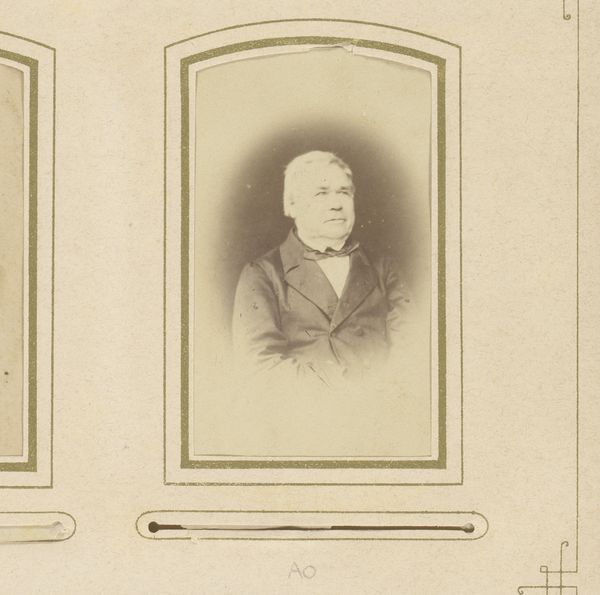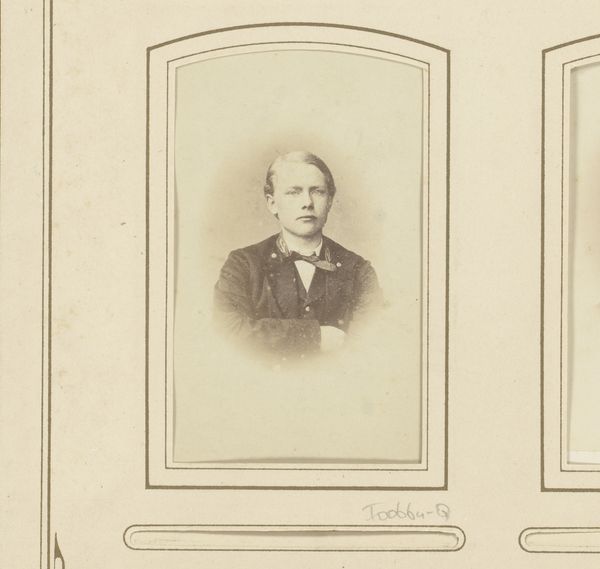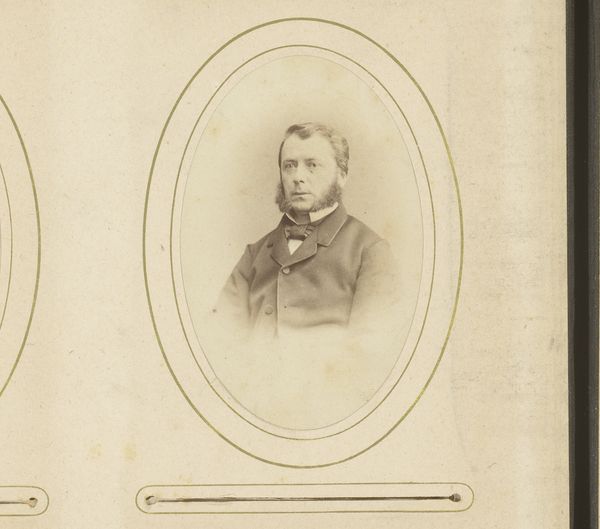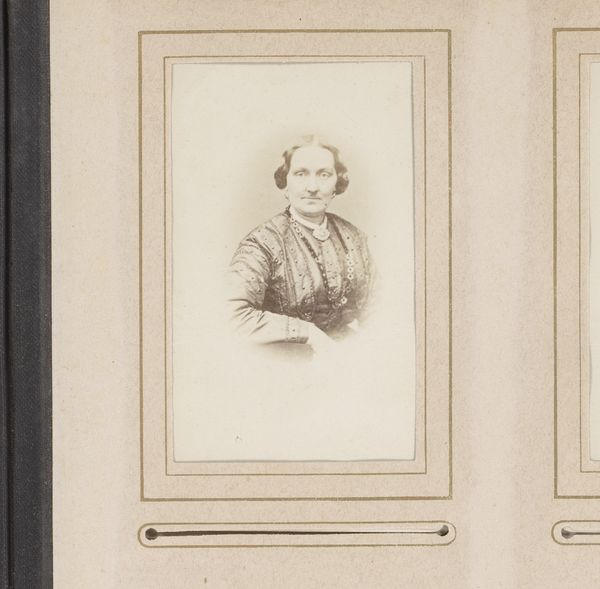
photography
#
portrait
#
aged paper
#
toned paper
#
16_19th-century
#
photography
#
tonal art
#
realism
Dimensions: height 83 mm, width 50 mm
Copyright: Rijks Museum: Open Domain
Editor: We're looking at "Portrait of an Old Man," a photograph by Dirk le Grand, dating from around 1872-1876. It's a really compelling image, quite formal, yet something about the aged paper and the subject’s direct gaze feels very intimate. What do you see in this piece, considering the time it was made? Curator: It’s fascinating how portrait photography rose to prominence during this era, shaping our understanding of identity and representation. This photograph isn't just a picture of an individual; it's a document reflecting the aspirations and values of a burgeoning middle class keen on capturing their place in society. Do you notice anything in the sitter’s attire or expression that might suggest his social standing or the intended message of the portrait? Editor: I see he’s wearing a very respectable suit and tie. He looks serious, dignified. It feels like he’s presenting himself in a very specific way. Curator: Exactly. Early photography was quite an undertaking. This carefully constructed image implies the subject's awareness of the performative aspect of portraiture. Photography offered the sitter a means of curating their image. Considering how rapidly photography democratized image-making, how do you think portraits like this one influenced social hierarchies and notions of public versus private self? Editor: I guess I hadn’t really considered how new photography was back then and what that meant for people wanting to portray themselves a certain way. Curator: The image highlights how technological advances shape visual culture, and in turn, affect how we see ourselves. Editor: I see how photography offered a new medium for carefully constructing a public image. Thank you!
Comments
No comments
Be the first to comment and join the conversation on the ultimate creative platform.
